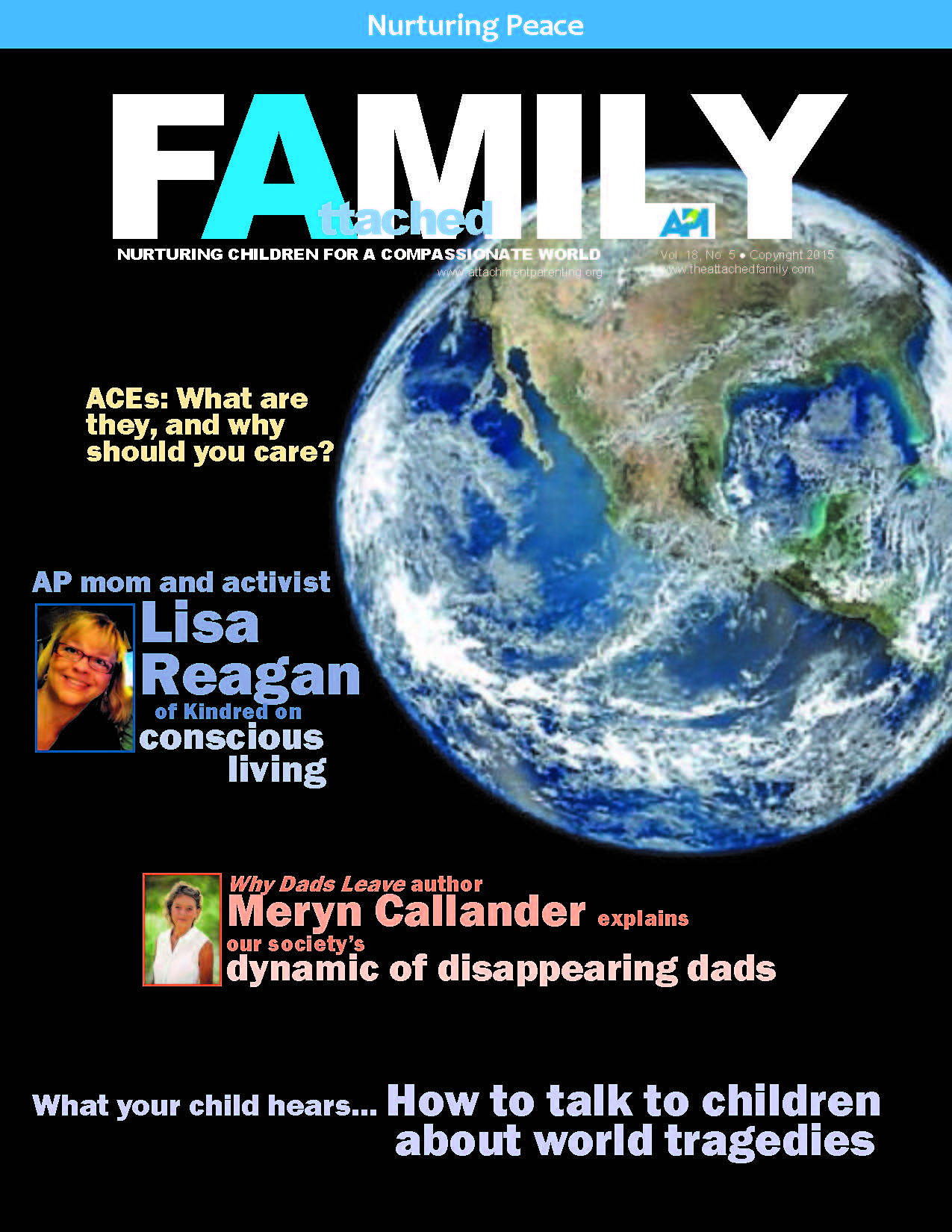I wholeheartedly believe that listening and understanding are key components in creating tolerant and peaceful environments, both at home and beyond — in our communities and nation.
Effie Morchi is the Assistant Editor of APtly Said, the blog of Attachment Parenting International. She and her husband have 2 children, a girl and a boy, and live in New York, USA. Being a stay-at-home mother after a career in information technology paved the way for her transformation and growth. Nowadays, she enjoys practicing Reiki and writing about her reflections in finding the profound in the ordinary and her spiritual path.
As a mother and an individual who advocates for peaceful existence for our children, I’m concerned about the inflamed political and social tone our kids are surrounded by.
Since before the last presidential election, I’ve been following the political coverage on TV, reading articles from a variety of sources all across the political gamut, observing and engaging in social media discussions, and interacting with people from diverse political affiliations. Time and time again, I keep thinking in frustration: No one listens to one another! The door to collaboration and cooperation has been shut tight, and worst of all, there is little to no effort to try to understand each other’s point of view.
I would like to state clearly that I believe we don’t necessarily have to agree with one another, but it’s imperative that we at least listen and try to understand one another. Most of us want and wish the same for ourselves, our family, and our nation — though we clearly disagree on the avenues to accomplish it.
It Starts at Home
It feels as though there are two different, opposing camps on opposite sides of our country with the road between them nearly completely blocked. There is minimal communication and flow between the two camps.
As that image made itself into my mind one day, I chuckled because at times I feel like there are two opposing camps in my own house: my 11-year-old daughter and my 9-year-old son. Their personalities, interests, and habits are polar opposites.
Yet, we are a family living under the same roof, and we share a special, sacred bond. To keep the peace and harmony in my house, I have to ensure the road between the two “camps” is wide open and well-traveled.
It has been a challenging task. I have been exploring different avenues to teach my kids to respect one another’s differences, to listen and keep the communication flowing, and to use their differences as a nurturing platform to strengthen one another, rather than diminish each other. We are a family — it’s imperative that we bridge our differences in spite and despite of them. I wish the same for our nation and our children — because at the end of the day, we are one big family.
Attachment Parenting International supports collaboration and cooperation in the parent-child relationship, as well as nonviolent communication, listening, and respect. Following such practices fosters understanding, harmony, and a strong bond — which, in turn, reduce tensions and conflicts within the family structure.
In my role as a parent, I learned the importance of listening and trying my best to understand the true expressions of my kids’ behaviors — what thoughts and emotions are manifested through their behavior.
For example, as I observed my 12-month-old daughter become increasingly irritated and frustrated, I explored and suspected that her inability to verbally communicate contributed to her discontent. Seeking solutions, I embraced sign language to alleviate her inability to communicate effectively, and she transformed and blossomed into a content, happy child.
With my younger son, I needed to understand that his needs and learning habits are vastly different than those of his older sister. Once I understood and accepted that, I was able to explore and implement different ways of approaching challenges that we encountered. Consequently, his schoolwork and overall behavior at home improved drastically.
Striving to understand why our children behave in certain ways and listening to them doesn’t necessarily mean we accept or support certain behaviors. Rather, it means that we are better equipped to diffuse our frustrations and seek effective solutions. For instance, we understand that it is developmentally appropriate for a 12-month-old baby to shriek and throw a tantrum when they are frustrated due to their inability to communicate verbally and be understood. It gets us closer to minimizing conflicts and finding solutions.
Talking To Our Children About Uncomfortable Topics
Conflicts and struggles can present great opportunities for learning and growth. We can seize the political climate as an invitation to open the door to valuable and applicable conversations with our children.
Here are 6 discussion points that can help steer the conversation in the right direction — keeping in mind subject matter and language ought to be age-appropriate:
1) Family Values
Clarify your own family values. It’s a good opportunity to emphasize your belief system, ideals, and priorities.
2) Listen
Sometimes as parents we can get caught up in expressing our own views and feelings and then neglect to ask our children how they feel or think. Just ask them. Make sure to create a comfortable space for them to form and share their own opinions, even if they differ from yours.
3) Bullying
Most kids have likely been exposed to the past election cycle’s political debates, ads, and mudslinging. This type of behavior in the media can open the conversation about how and why some adults and kids mistreat or bully each other. A couple points to consider:
- What are some constructive ways kids can deal with everyday bullying scenarios at school or the playground?
- When kids witness a peer being bullied, how can they best diffuse the situation?
4) Honesty
Some delicate and divisive subjects, such as racism, terrorism, war, and poverty, can be challenging to discuss and uncomfortable. Our children expect and deserve our honesty. Children’s books and movies can be helpful tools to aid the conversation.
5) Accept and Respect Differences
Our differences can strengthen or weaken us. It is important that we emphasize to children that different people come from different backgrounds and experiences in life and, as such, their values and points of views may be at odds with our own. A couple points to ponder:
- What are some scenarios where children encounter differences
- What are respectful and peaceful ways they can practice to bridge their differences?
6) Humor
Humor and laughter can be beneficial by lightening up the mood and reducing stress and anxiety. Political humor is one of the hallmarks of a free society. You can share with your kids age-appropriate political cartoons and watch comedy together. An important point to highlight:
- When does funny get to a point of not-so-funny-anymore, harsh, or even abusive?
Our kids observe and learn from our behavior as we are their most significant role models. As such, we ought to engage in introspection and investigate our own conduct — demonstrating to them that we are fostering a tolerant environment for them as well as our nation.
I can think of very few things that are more paramount than nurturing our children for a compassionate world. It’s our responsibility to illustrate to them that when we know better, we can do and be better — individually and collectively — as one big family.
Further Reading:
 From the “Nurturing Peace” issue of Attached Family:
From the “Nurturing Peace” issue of Attached Family:
- “Talking to Our Children About World Tragedies” by Tamara Brennan, PhD


